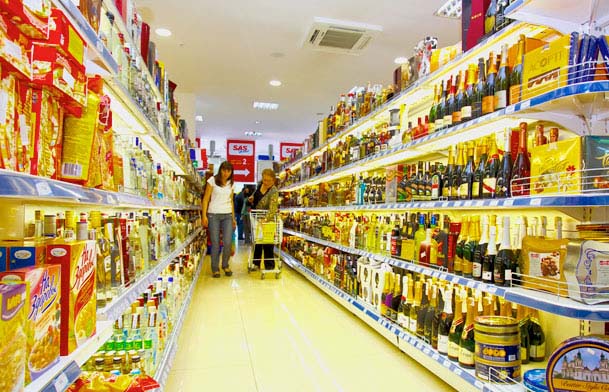
The big four supermarkets are 'under pressure' as a result of long-term market polarisation, according to latest grocery figures published today.
Among the big four supermarkets, only Sainsbury’s has managed to not lose share in the past year with year-on-year growth of 3.8%. Although Morrisons is continuing to lose market share, the retailer’s sales growth has shown progressive improvement during 2013 – rising from the low of -1.7% in January to the current figure of 1.8%.
The latest data also shows that recent price matching campaigns at the larger retailers have served to shine a spotlight on private label quality. Edward Garner, director at Kantar Worldpanel said: “The latest price matching promotions from retailers have reduced the amount consumers are shopping around, with many people feeling that they can get the same prices at different retailers.
“As a result we are seeing an increased focus on quality. Both Tesco Finest and Sainsbury’s ‘Taste the Difference’ ranges are now growing strongly and Aldi’s ‘Like Brands only Cheaper’ campaign and Lidl’s ‘Taste Test’ are positioning their private products as direct competitors to major brands.”
Garner comments: "Waitrose, Aldi and Lidl have all been hugely successful in recent years, growing well ahead of the market average. Together, these retailers now account for 11.5% of the grocery market, 3.2 percentage points more than they did this time four years ago. This trend has cut deeply into the available market share for the bigger retailers who are now having to compete for a contracting middle ground.”
Lidl has grown its market share to 3.1%, an all-time high for the outlet, while Aldi retains its record 3.6% which it established during the last period. The growth rate at Waitrose remains at 10.9%, nearly three times the market average, and means the retailer now accounts for 4.8% of the market.
Grocery inflation remains at 3.9%* for the 12 week period ending 07 July 2013. This is only slightly higher than the market growth of 3.7% which means that the pressure on households to trade down has decreased compared with last period.
This figure is based on over 75,000 identical products compared year-on-year in the proportions purchased by British shoppers and therefore represents the most authoritative figure currently available. It is a ‘pure’ inflation measure in that shopping behaviour is held constant between the two comparison periods – shoppers are likely to achieve a lower personal inflation rate if they trade down or seek out more offers.
